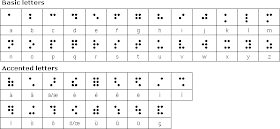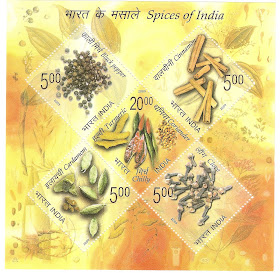Honouring Contributors to Society :
C. Subramanium and the Indian Green Revolution:
C. Subramanium and the Indian Green Revolution:
(30th January 1910 to 07th November 2000).
Chidambaram Subramaniam was born on 30th January 1910 in a village called Senguttaipalayam. He had a B.Sc. degree in Physics from Presidency College, Chennai and a Law Degree from the Law College. (He is hailed as the architect of the “Green Revolution in India”. In other words, “CS” as he was called, proved his mettle literally in a field other than the ones in which he had studied.
He participated in India’s Freedom struggle from the British and was jailed. He joined politics and was a member of the Constituent Assembly of India and participated in the framing of the Indian Constitution. Later, he was a minister and leader of the House in Madras State/Madras Legislative Assembly from 1952 to 1962.
Afterwards, moving on to the Lok Sabha, (equivalent to the House of Commons in the British Parliament), on different occasions he handled important portfolios like Minister for Steel and Mines, Agriculture, Finance and Defence. He also served as the Dy. Chairman of the Planning Commission of India and as the Governor of Maharashtra.
He is known as the architect of India’s modern Agricultural Development policy, after the successes of his programme which led to record wheat production in 1972 – an achievement termed as the “Indian Green Revolution”. As Minister of Food & Agriculture, he played a decisive role in introducing high yielding varieties of seeds and more intensive application of fertilizers which, in turn, brought about increased output of cereals in the late 60s and early 70s and led to attainment of self-sufficiency in food grains in the country.
The great famine of Bengal had left about 3 million dead in 1943-44. The World War II effort had led to seizure of farm produce by the British Government in India, who turned a blind eye to the plight of the Indian farmers. The British left India without finding a way-out from the depths that Indian Agriculture/farming was plunged into. Nevertheless many nations came out to help the distressed fledgling Indian Nation and India had to import several tonnes of Wheat/foodgrains in the mid-sixties.
The early coinage minted in Independent India, too, laid stress on “Growing more Food”. The one rupee coin carried this symbolic message till the mid-2000s when this message was replaced by other messages. (Please refer my posts on “Coins highlighting social messages and civic virtues/sensibilities” and “The Evolution of the one rupee, the steady building block of the Indian monetary system”).
The USA helped out with its massive PL-480 programme. US Agricultural Research Service (ARS) had developed the legendary “Norin” variety of wheat (a dwarf variety with little foliage and a heavy head of grain) and later a new variety called the “Gaines” dwarf variety was developed. Dr. Norman Borlaug crossed the Gaines variety with Mexico’s best varieties and came up with interesting and high yielding variants.
Agricultural technology, including buying best variety seeds (Sonora 64 and Lerma Rojo 64 A) needed to be backed up with proper conducive delivery systems and marketing policies.
Subramaniam brought about the necessary reforms. He led a team comprising M.S. Swaminathan and B.Sivaraman (known as the three “S”s) in spearheading transformation of his vision of a “Green Revolution” into reality. Information and educational literature was disseminated through Krishi Vigyan Kendras (English Translation: Agriculture Science Centres), model farms and using the services of Block Development Officers (BDOs) in villages. The Indian Council of Agricultural Research was revamped. As the dwarf variety was chemical and fertilizer intensive, new industrial units were licensed.
To facilitate, two crops a year (multi cropping) pattern, more irrigation canals and bore-wells were put in place. Policies had to be changed for assured marketing and pricing as well as creation of large storage facilities.
The results through the integrated approach were outstanding. In the mid-seventies when economists had predicted that food grain stocks in India would be totally depleted, India achieved a near record production of food grains. Infrastructure improved, India’s International debt-repayments were on time and more employment opportunities were created.
Nevertheless, the Green Revolution led to the use of pesticides for more output which led to depletion of the soil nutrients leading to crop failures and farmer suicides. One way out suggested was genetically modified (GM) crops as the next Green Revolution. However, introduction of these varieties has met with stiff opposition from the Indian farmers. Objective scientific assessment is yet to deliver a final verdict on GM crops.
Meanwhile, there is an urgent need to resort to eco-sensitive farming with minimum use of fertilizers/chemicals, so than soil nutrients do not get depleted. There is growing awareness among farmers to take up organic farming. (I was recently watching a programme on CNN titled “Green Pioneers “in which one such project in Dehradun was covered extensively where several farmers are being educated by a successful lady pioneer to take up organic farming.)
Agriculture produce pricing and marketing policies, also, need to be under constant review to help out farmers in their new endeavours/enterprises.
Be that as it may, in the decades of the sixties and seventies, the best technologies were not available to a young Indian nation. Subramaniam’s “Green Revolution” spearheaded food grain production and put food on the table of many starving Indians. That was his greatest contribution along with his dedicated team known as the three “S”s.
Other achievements:
Chidambaram Subramaniam was also the President of Bhartiya Vidya Bhavan and authored several papers and articles on his vision of the “Green Revolution” in India He has a 3-volume set of books to his credit, titled “Hands of Destiny” (volume I is called “The Turning Point”, volume II is labeled “The Green Revolution”, while Volume III is about his work during the “Eventful Decades”). He is also the author of several publications titled “War on Poverty”, “The India of my Dreams”, “The New strategies in Indian Agriculture” and “Some Countries which I visited around the World”. He was also the founder of the National Agro Foundation in Chennai and Bharathidasan Institute of Management in Tiruchirappalli.
He was awarded India’s highest civilian honour “Bharat Ratna” (English Translation: “Jewel of India”) in 1998.
He passed away on 7th November 2000 and left behind a legacy of grateful Indian farmers who are carrying his vision forward by adopting latest modern technology and are exploring concepts to apply to traditional Indian Agriculture methods.
The Reserve Bank of India brought out a five rupee cupro-nickel coin for general circulation in his honour in 2010 to celebrate his birth centenary.
The obverse of the coin shows the Lion Capital with the words “Satyameva Jayate”(Truth Always Prevails) forming the emblem of the Indian Government. Below this symbol is the numeral “5” indicating the denomination of the coin. The words “Bharat” and “Rupiye” in Hindi appear on the left side of the coin, and the words “India “ and “Rupees” in English appear on the right side of the coin.
On the reverse of the coin is his image with the words “ C.Subramaniam Janam Shatabdi” in Hindi and “C.Subramaniam Birth Centenary in English. The years 1910-2010 (the year of his birth and the centenary year are mentioned below his picture.
Today I have received a Commemorative coin (Proof) from the India Government Mint ,Hyderabad .The coin album as well as the coin image and specifications are given below:
The Front of the coin album .
The details about Mr. Subramanium given overleaf in the Album.
The obverse of the Commemorative five-rupee coin.
The Reverse of the Commemorative five-rupee coin.
The specifications of this coin are:
Composition:
Copper : 75%
Zinc : 20%
Nickel : 5%
Dimensions of the coin:
Diameter: 23mm
Weight : 6gms
Serrations: 100
The last inner leaf of the album showing Mr. Subramanium's portrait which has been used on the coin face.
Posted on 04.02.2017:
I have acquired the following back-dated First Day Cover (FDC) from the epostoffice, New Delhi, for a premium of Rs.100/- , which has been delivered a couple of days ago:
This First Day Cover (FDC) is titled "C.Subramanium" (in both Hindi and English) and shows his portrait of the upper left hand corner. The Front of this envelope shows a field of green with crops ripe for harvesting, symbolising the culmination of Mr. Subramanium's projects to fruition.
The 500 Paise or Rs.5/- stamp shows his portrait as well. The Cancellation hand-stamp depicts his name "C.Subramanium" in both Hindi and English and is of New Delhi GPO There is an ear of corn shown in the hand-stamp which is shaped like a rocket symbolising Mr. Subramanium spearheading the Indian Green Revolution and putting food on the table of every Indian. The Cancellation is dated "28.11.2009"
Posted on 04.02.2017:
I have acquired the following back-dated First Day Cover (FDC) from the epostoffice, New Delhi, for a premium of Rs.100/- , which has been delivered a couple of days ago:
This First Day Cover (FDC) is titled "C.Subramanium" (in both Hindi and English) and shows his portrait of the upper left hand corner. The Front of this envelope shows a field of green with crops ripe for harvesting, symbolising the culmination of Mr. Subramanium's projects to fruition.
The 500 Paise or Rs.5/- stamp shows his portrait as well. The Cancellation hand-stamp depicts his name "C.Subramanium" in both Hindi and English and is of New Delhi GPO There is an ear of corn shown in the hand-stamp which is shaped like a rocket symbolising Mr. Subramanium spearheading the Indian Green Revolution and putting food on the table of every Indian. The Cancellation is dated "28.11.2009"




























































































